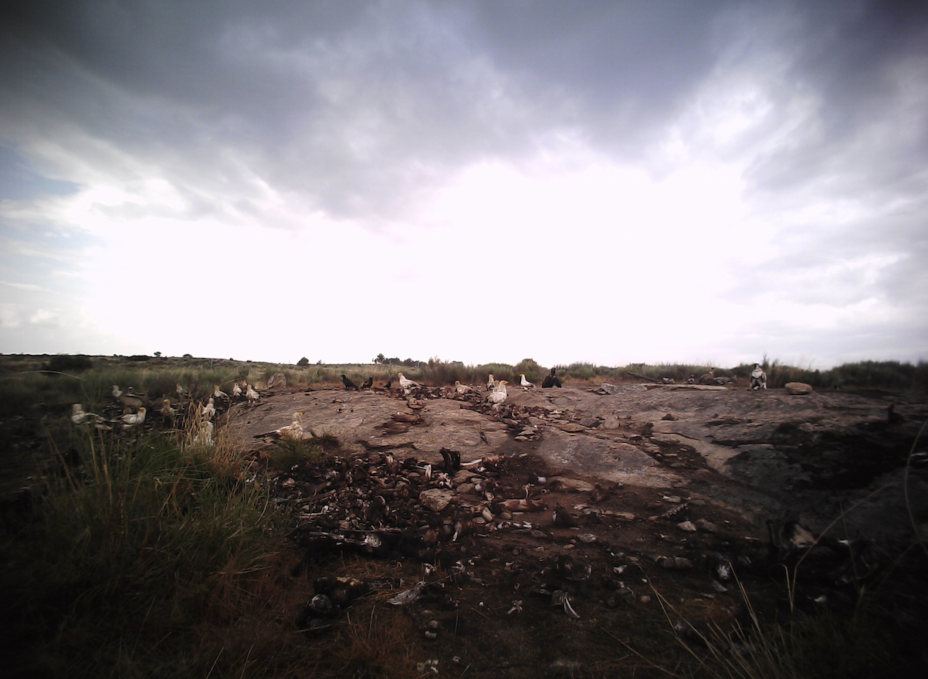
GPS transmitter fitted to a Cinereous Vulture helps team rescue the bird after it became injured near the Portuguese town of Nisa.
Following Portugal’s Cinereous Vultures
Last summer Murtigão became the first wild Cinereous Vulture in Portugal to be fitted with a GPS transmitter by colleagues from Liga para a Protecção da Natureza (LPN) and the Institute for Nature Conservation and Forests (ICNF) in the Moura region of southern Portugal, generously supported by the MAVA Foundation. The same year in the Tejo International Natural Park, home to a colony of around 15 breeding pairs, another young bird was fitted with a transmitter by a team from the Hawk Mountain Sanctuary in collaboration with Endesa Electric Company, the Department of Toxicology of the University of Murcia (Spain) and the ICNF.

Weighing between 30g and 40g fitting a GPS transmitter to wild-born and rescued birds in Portugal helps conservationists understand their movements, foraging ranges and habits. As the population of Cinereous Vultures recover in the country the information these transmitters provide is vital to reveal any threats they may face during their travels giving insights for conservationists that will allow them to carry out actions to reduce the risk they face and help support the species comeback in the area.
They also allow teams to pick up when a vulture is no longer moving and potentially injured as was the case with this bird.
Injured as a result of collision
This young bird was found injured on April 10, seven kilometers from Nisa, in the Serra de São Mamede Natural Park area, thanks to the GPS transmitter he carried with him. It is thought that it may have hit a power line.
Rescuing and treating the injured Cinereous Vulture (c) CERAS-Quercus
“During the monitoring that is being carried out, it was detected that the information provided by the tag indicated that this vulture did not have a normal behavior, with few displacements and always in a very small space,” Alfonso Godino, an associate researcher at Hawk Mountain Sanctuary, said.
Therefore, the technicians and staff of these two protected areas – the natural parks of Tejo Internacional and Serra de São Mamede – triggered an operation to try to find this vulture.
The bird was then taken to the Center for Studies and Recovery of Wild Animals (CERAS) of Castelo Branco, managed by Quercus – National Association for Nature Conservation for a first inspection.
“The CERAS veterinarian has detected a dislocation,” added Alfonso Godino. The vulture was then taken to the Veterinary Hospital of the University of Trás-os-Montes and Alto Douro (UTAD) to undergo a surgical intervention. It is hoped the young bird will be returned to the wild once it has made a full recovery.
Cinereous Vultures in Portugal

Cinereous Vultures became extinct as breeding species in Portugal in the 1970s as a result of illegal wildlife poisoning, loss of habitat and reduction of available food. An increasing population in Spain saw the species first return to breed in central Portugal (Tejo Internacional) in 2010 (home to a colony of 15 breeding pairs in 2018), and then in north-eastern Portugal (now with two breeding pairs). In 2015 the species started breeding in southern Portugal too, in 2018 there were eight breednig pairs in Herdade da Contenda, a large estate owned and managed by the Moura Municipality. In 2018 there were a total of 25 breeding pairs in Portugal.





